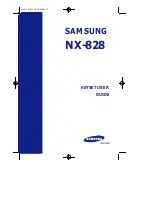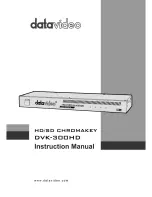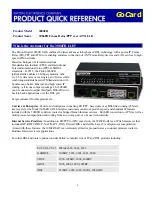
IE-WFS-KAL-WiFi-01
7
Preparing the WiFi sensor for calibration
Perform an optical check for mechanical or other visible damage. In case of
damage, hand over the device for repair.
Check if the device is not reporting a weak battery for real-time clock backup.
If so, follow recommendation in User manual.
The measured values can be read directly from the LCD display of the WiFi
sensor or using one of the supported communication protocols (e.g. web or
Modbus).
Calibration procedure
Place the prepared DUT or its probe into the calibration chamber. Place the
probe of the measuring standard near the sensing element of the DUT. If you
read the measured values directly from the LCD display of the device, place
the DUT so that it is LCD display visible.
Close the calibration chamber, start it, and set the desired calibration point
value.
Wait for the stabilization of device. The stabilization time can be counted from
the moment when the controlled quantity has stabilized in the calibration
chamber. This time should be at least three times the response time t90
specified in the User manual for the calibrated quantity.
After this time, read the measured value of the standard and the value from
the calibrated DUT.
Set the chamber to generate another value for next point and repeat the
above procedure for all required calibration points.
When calibration is finished, remove the DUT from the chamber and evaluate
the measurement.
The instrument's accuracy for each calibration point is specified in its User
manual. When evaluating the measured values, it is necessary to consider
the extended uncertainty of measurement (may vary for each calibration
point).
If high deviations are found (temperature measurement error greater than
1
°C, relative humidity greater than +/-5 %RH, pressure greater than 5 hPa
or CO
2
greater than 10 % of the measuring range), switch off the device and
contact the distributor or service department
.
In case of minor deviation, you
can carry out device Adjustment (see chapter
).




































